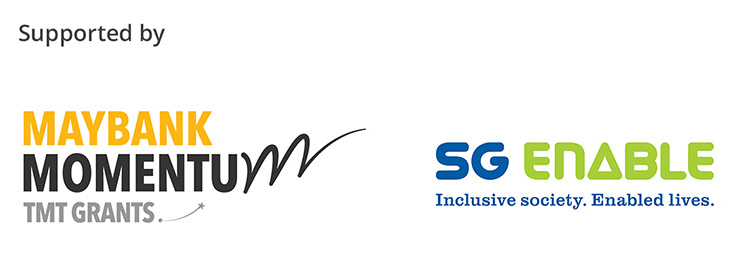
Transitioning to primary school is a significant milestone for any child, and it can be especially challenging for caregivers and special needs children as environments, people and routines change significantly.
As a caregiver who has experienced this journey firsthand, I had the benefit of receiving guidance and emotional support during this transition which eased my son’s journey through uncertainty.
In this article, I’ll share some practical tips to help fellow caregivers navigate the path from preschool and Early Intervention Program for Infants and Children (EIPIC) to primary school so that you and your special needs child can prepare for this transition. This applies for both sons and daughters.
Tips for transition from preschool and EIPIC to primary school
1. Start Early Preparation
Begin the transition process well in advance. Visit the new school, meet the teachers, and familiarize your child with the new environment. If your child’s preschool or EIPIC classmates also happen to be attending the same primary school, letting him know could ease his anxiety.
2. Involve Your Child
Empower your child by involving them in the preparation process. Allow him to choose a backpack, school supplies, or even a special comfort item to bring to school. This involvement fosters a sense of ownership and encourages him to look forward to the new school.
3. Build routines for Primary School
Consistency and familiarity helps our children adjust to a new routine. Ease him into his new Primary School routine in advance, especially during the weeks leading up to the transition. Gradually introduce changes in daily activities to help your child adapt to the new schedule.
Ideas to try:
- Let him wear the school uniform a few days before school starts to help him get used to the sensory stimulus of the material. Teach him how to button and unbutton clothes, and manage zippers during toilet breaks or changing clothes. Purchase shoes with velcro if he is not confident of tying shoelaces.
- Provide opportunities for him to pack and unpack his new bag and pencil case so he knows where his items should be kept.
- Allow him to spend small amounts of money at the local coffee shop and teach him how to count the change.
- Recce the school and route to and from the school so he knows what to expect every day.
- Practise sitting in a classroom setting. Some EIPIC centers recreate classroom settings to enable children to figure out where to place their belongings, what to expect in the classroom, how the teacher may use a whiteboard or other teaching aids, and expected behaviour in class
- Do a test run of a typical school day, from waking up early in the morning, going to school, and back home.
4. Storify and visualize
Source for social stories online (or create your own) and draw up a visual schedule for the various tasks your child will go through. Use simple language, photos, videos and visuals to explain the changes your child will encounter, including the new school, teachers, and classmates. Revisit the social stories frequently and let him explain the stories back to you to reinforce his learning.
Examples of social stories:
- Preparing for school: brushing teeth, wearing uniform and shoes, ensuring bag and water bottle are brought along
- Travelling to school: bus or MRT routes, drop-off points, walking to classroom or hall, time management
- Attending school: name of teachers and class, location of classroom, expected behavior in classroom, asking for toilet breaks, how to talk to classmates
- Going home: pick-up points, bus or MRT routes, time management
- Other school matters: homework routine, packing his bag neatly for the next day, having a conversation with you about school
- Emergencies: who to call when he feels sick or gets lost by accident, who he can approach for immediate help
- Socializing: how to make friends, appropriate vs inappropriate touch, dealing with bullying, how to manage emotions
5. Communication with Teachers
Arrange a parent-teacher meeting with your child’s new teachers before school starts if possible, or early in the school year. Share information about your child’s strengths, challenges, and any specific needs they may have. These meetings provide an opportunity to discuss your child’s unique needs, share insights from their preschool experiences, and establish a plan for a smooth transition.
You can ask your child’s EIPIC center to prepare a useful list of information about your child to share with the primary school teachers. Share visuals or routines with the new teachers that could help them anticipate and manage your child positively in the classroom. Ask for feedback and follow-up meetings to check on your child’s transition.
6. Prepare for Sensory Challenges
If your child has sensory sensitivities, work with the new school to create a sensory-friendly environment. Discuss potential triggers and effective strategies to address sensory challenges, ensuring your child feels comfortable and supported.
For example, as my son is a visual learner and may not pick up auditory cues when the teacher is addressing the class, the teacher paired him with a friendly classmate who would tap on my son’s shoulder as a physical cue to look at the teacher. She also let him sit near the front of the class so he would not be distracted visually by other movements.
As my son is also sensitive to sudden, loud sounds, we informed the teacher of his reactions and how to calm him down if he encountered loud sounds due to thunderstorms, construction or unexpected shouting. We also took time to explain to him how he could calm himself down with reference to the Zones of Regulation concept that he learnt in EIPIC.
7. Foster Peer Relationships
Encourage the development of friendships with his peers and foster positive social interactions by organizing playdates, participating in school events, and collaborating with teachers to facilitate inclusive activities. Being able to meet and chat with other parents can also teach us new skills and tips to apply to our challenges.
8. Celebrate Achievements
Celebrate both small and big achievements throughout the transition process. Positive reinforcement boosts your child’s confidence and helps create a positive association with the new school environment, his classmates and teachers, and enjoy learning.
We celebrated the baby steps towards independence, such as buttoning and unbuttoning uniform, noting down homework diligently, learning the names of his friends, playing soccer with other classmates during recess, saving up extra change from recess, helping out with class duties, and looking forward to attending school.
Enjoy the journey!
Transitioning from preschool and EIPIC to primary school for our special needs children requires thoughtful planning, communication, and collaboration with new partners. I hope that these tips will help you and your child enjoy this significant milestone of growing up.
Be patient with your child, and yourself as well. Have fun and enjoy bonding together; having a positive attitude towards the new phase will influence your child too.
Break down tasks into baby steps and pace yourself; you have gotten this far in life, and you can reach your next stage with consistent efforts.
– Julia Chan, caregiver of a boy who transited from preschool and EIPIC to Primary School
Learn more via CaringSG Webinars
CaringSG has run several webinars with tips and resources from professionals and caregivers on transiting your child from EIPIC to Primary School. These webinars and resources can be accessed by logging into our Members’ Portal > Profile > Video Resources.




